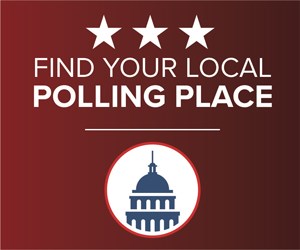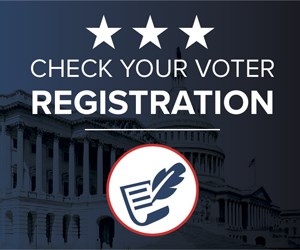The U.S. Supreme Court heard District of Columbia v. Heller, a monumental Second Amendment case that will likely decide whether you have an individual right to keep and bear arms.
By Frank Miniter
In March, the debate over whether Americans have an individual right to own guns made it into the marble halls of the U.S. Supreme Court. The case is District of Columbia v. Dick Anthony Heller, and it has garnered headlines across the nation. Unlike most constitutional questions in which there are enough past cases to give judges a roadmap, the last Supreme Court precedent directly interpreting the Second Amendment is the 1939 Miller decision, a decision so limited that even the Supreme Court says it has "never clearly decided" if the Second Amendment protects an individual right.
Without a clear precedent to follow, the court is looking all the way back to our founding era for direction. After the American Revolution and the ratification of the U.S. Constitution, James Madison drafted the Bill of Rights in 1789 and Congress acted on it in 1791, as it had promised it would after George Mason and others argued that the Constitution failed to protect the basic principles of human liberty. The first Congress then edited, debated and sent a proposed list of 12 amendments to the states, which ratified ten. Those ten amendments became our Bill of Rights. The Second Amendment ("A well regulated Militia, being necessary to the security of a free State, the right of the people to keep and bear Arms, shall not be infringed") has stood for more than two centuries as a bulwark for personal liberty--a right that literally makes the frailest woman the equal of the brawniest felon.
It's a right that has increasingly been attacked by those who would prefer to rewrite the Second Amendment into something that only protects state militias, not individual citizens.
Washington, D.C. is arguing it can ban handguns because, according to its logic, people don't have a right to keep and bear arms unless they are members of a government-regulated militia. Dick Anthony Heller, however, is contesting that claim by arguing that D.C has infringed his Second Amendment rights. Heller is a security guard who carries a handgun while on duty guarding the federal building that houses the administrative offices of the federal court system, but he has to turn in his handgun when he goes home; as a result, he wants to be able to keep a handgun at home for self-defense. But D.C. turned down his request to register a handgun. So, though he is allowed to guard the government with a firearm, he has been denied the right to guard himself. This moral dilemma is the result of D.C.'s handgun ban, passed in 1976.
This clear confrontation set up a constitutional question that the Supreme Court defined this way: "Whether [provisions of the D.C. firearms code] violate the Second Amendment rights of individuals who are not affiliated with any state-regulated militia, but who wish to keep handguns and other firearms for private use in their homes?"
Though a decision isn't expected until June, here's what happened in the courtroom and how a ruling might affect your rights.
The Hearing
On March 18, the sun rose upon a line of 200 people who waited all night on the steps of the U.S. Supreme Court in Washington, D.C. for a chance to see this historic case. Nearly as many journalists were setting up TV cameras and conducting interviews. An informal survey of the people in line found it was loaded with Second Amendment adherents. It seemed like even more evidence that the clear majority of the American people understand that the Right to Keep and Bear Arms is a fundamental individual right--though the whimsical notion that the Brady Campaign vassals were too timorous to spend a night on D.C.'s crime-ridden streets occurred to a few.
The long line of expectant people prompted NRA President John Sigler to comment, "I'm pleasantly surprised and impressed by the number of people lining up and camping out to witness this monumental case. It demonstrates the significance of this cherished freedom to gun owners and the American people."
Beyond the pulsating scene on the steps of the Supreme Court, those lucky enough to get inside found the court's marble halls and church-quiet atmosphere filled with people waiting to make or witness history. The staid scene inside highlighted the fact that the presidents we elect appoint justices who then determine the scope of our rights. Journalists anxiously shuffled their feet. Justices stoically took their seats along their bench. The two opposing attorneys readied arguments designed to influence history. And the hot air of politics dissipated into the physical embodiment of our fundamental rights, imbuing all with the notion that the founding fathers would be listening.
Debate on the Amendment's Definition
After dozens of lower court decisions, one very narrow 1939 Supreme Court decision, a library of books on the Second Amendment and decades of NRA advocacy, two lawyers with opposing views and just 30 minutes apiece were poised to state their cases. On one side was D.C.'s Walter Dellinger, a 1966 Yale Law School graduate who was acting solicitor general under President Bill Clinton, arguing that Americans don't have the right to own handguns or keep functional firearms in their homes. On the other was Alan Gura, a 1995 graduate of the Georgetown University Law Center, contending that the Second Amendment clearly protects an individual's right to own firearms and that D.C.'s handgun ban is unconstitutional.
Dellinger led off for D.C. He summed up his case by saying, "Even if the language of keeping and bearing arms were ambiguous, the [Second] Amendment's first clause confirms that the right is militia related."
Chief Justice John Roberts was quick to question this assertion: "If it is limited to state militias, why would they say 'the right of the people?' In other words, why wouldn't they say 'state militias have the right to keep arms?'" Indeed, the Framers certainly were capable of differentiating between the words "state" and "people." This is clear from the text of the Amendment itself, which guarantees "the right of the people to keep and bear Arms." Also, throughout the Constitution, individual rights are guaranteed to "the people." When the Framers refer to a power of a state, they refer to "the states." In fact, in the Tenth Amendment the Framers refer both to the "people" and to the "states," demonstrating that they were capable of distinguishing between individual and state rights.
After a little more sparring, Justice Anthony Kennedy asked whether "the second clause [of the Second Amendment], the operative clause, is related to something other than the militia." And then pressed further by asking, "It had nothing to do with the concern of the remote settler to defend himself and his family against hostile Indian tribes and outlaws, wolves and bears and grizzlies and things like that?"
Dellinger wasn't able to answer that question, and was redirected when Justice Antonin Scalia moved the debate to what the Framers originally intended. Justice Scalia pointed out, "[the English jurist] Blackstone ... thought the right of self-defense was inherent, and the Framers were devoted to Blackstone. Joseph Story, the first commentator on the Constitution and a member of this court, thought it was a personal guarantee."
Dellinger tried to address Justice Scalia's point by saying, "When Blackstone speaks of the personal guarantee, he describes it as one of the use of weapons, a common law right. And if we're constitutionalizing the Blackstone common law right, he speaks of a right that is subject to due restrictions and applies to, quote, 'such weapons, such as are allowed by law.' So Blackstone builds in the kind of reasonableness of the regulation that the District of Columbia has. Now then ... ."
Chief Justice Roberts interrupted him by pointing out: "Well, that may be true, but that concedes your main point that there is an individual right."
Dellinger tried another approach by arguing that the Second Amendment modified the militia clause in the U.S. Constitution, which prompted Justice Kennedy to ask, "The Second Amendment doesn't repeal [the militia clause]. You don't take the position that Congress no longer has the power to organize, arm and discipline the militia, do you?"
Dellinger replied, "No." Then Justice Kennedy said, "So [the Second Amendment] was supplementing it. And my question is ... to what extent did it supplement it? And in my view it supplemented it by saying there's a general right to bear arms quite without reference to the militia either way."
Dick Heller's attorney, Alan Gura, was later questioned heavily on the relationship of the two clauses in the Second Amendment. He argued that the amendment was designed to protect the civilian militia and that the second part of the clause ("the right of the people to keep and bear Arms, shall not be infringed") protects firearms that are in common use because citizens were required to bring their own arms when called to duty. Justice John Paul Stevens questioned this assertion by pointing out that the Second Amendment doesn't mention self-defense, which Gura parried by saying it was clear that the states' constitutional ratifying conventions favored the individual rights view.
Does D.C.'s Gun Ban Work?
Whether D.C.'s gun ban has reduced violent crime is a critical question pertaining to D.C.'s position that its handgun ban is reasonable. Though Dellinger argued its gun ban has reduced crime, the facts are not on D.C.'s side. Violence increased after the 1976 ban, peaking in 1991 with 482 homicides and giving Washington the highest murder rate in the country. The numbers have since fallen, but with 169 homicides in 2006, D.C. is still consistently one of the country's most dangerous cities.
In fact, the NRA's "friend-of-the-court" brief in the case exposes the results of the ban: "In 2006--three decades after the handgun ban was enacted--the District's murder rate remained 29.1 per 100,000, only 11.3 percent lower than the 1975 rate of 32.8. The nationwide murder rate, on the other hand, fell from 9.6 to 5.7 per 100,000 during this period, a far greater decline of 40.6 percent. Murder rates in the District are not only far higher than in the nation as a whole (in 2006, the District's rate was more than five times the national average), they are also greater than in most other comparably sized cities ... . All told, whatever the District's expectations in enacting the handgun ban in 1976, three decades of evidence conclusively demonstrate that it has been an absolute failure. It has burdened the Second Amendment rights of the District's residents to very little, if any, effect. It is long past time for the District's experiment, at the expense of law-abiding citizens, to end."
Could All Gun Laws Be Struck Down?
D.C. further argued that an individual rights ruling could toss out all gun regulations, federal, state and local. However, the justices discussed and largely dismissed this wild assertion on the grounds that other individual rights, such as the First Amendment, are subject to reasonable limits, such as a restriction on falsely shouting "Fire!" in a crowded theatre. The full meaning of whatever the Court decides will be vetted in the political arena; the decision will not simply erase all gun laws.
U.S. Solicitor General Paul D. Clement, who was granted 15 minutes to give the federal government's view of the case, explored this point. He began by declaring that the Justice Department's position is that the Second Amendment guarantees an individual right. He further argued that the case should be sent back to the lower courts with a new standard of review, one of "intermediate scrutiny." This is an important legal point, because the standard of review will essentially determine how high a bar the government has to clear in order to justify a regulation restricting the right. "Strict scrutiny" is the most protective and is accorded to rights the court deems "fundamental." The First Amendment, for example, has this protection. This is why the NRA's friend-of-the-court brief argued for strict scrutiny.
Justice Ginsburg asked if a strict scrutiny standard would make many of the firearm regulations already on the books unconstitutional. Clement answered that strict scrutiny could imperil some laws, but "intermediate scrutiny" would not. Chief Justice Roberts then said, "I'm not sure why we have to articulate some very intricate standard. I mean, these standards that apply to the First Amendment just kind of developed over the years as a sort of baggage that the First Amendment picked up."
What Restriction is "Reasonable?"
Beyond D.C.'s contention that there isn't an individual Right to Keep and Bear Arms, it is also D.C.'s position that its outright ban on handguns and operable long guns in the home are somehow reasonable, even though they preclude any chance of a person using a gun to defend himself or his loved ones. Dellinger argued that the court should consider that 42 states have "adopted a reasonableness standard that allowed them to sustain sensible regulation of dangerous weapons." Chief Justice Roberts attacked Dellinger's effort to associate these state rules with D.C.'s more restrictive law, asking, "What is reasonable about a total ban on possession?"
Dellinger contended that it is reasonable to have an outright ban on handguns because residents of D.C. can own a long gun, which prompted Justice Samuel Alito and other justices to point out that it isn't reasonable because residents have to keep rifles and shotguns locked and unloaded. In fact, the Court later explored this point by asking Dellinger how long it takes to take off a trigger lock. After a lot of "ums" and "ahs" he said, "It took me three seconds." To which Chief Justice Roberts chided, "You turn on the light, you pick up your reading glasses ... ."
The marble pillars bounced laughter back and forth for a light moment before the justices continued to dig into what the relative term "reasonable" means. They discussed what firearms might be protected by the Second Amendment, and deliberated whether licensing and other control measures were reasonable.
When Gura summed up his position by saying that the District of Columbia "simply doesn't trust the people to defend themselves in their homes," Justice Stephen Breyer asked Gura, "In light of [the number of people killed by firearms every year] why isn't a ban on handguns, while allowing the use of rifles and muskets [sic], a reasonable or a proportionate response on behalf of the District of Columbia?"
Gura responded that "the handgun ban serves to weaken America's military preparedness." Keeping an armed populace that is proficient with firearms is certainly in keeping with what the founding fathers intended and, in fact, is the reason the NRA was formed after the U.S. Civil War. However, the discussion on what is a reasonable restriction on Second Amendment rights showed that even if the Court affirms that the Second Amendment protects an individual right, this question of "reasonable" gun control will define the next epoch of legislative debates and is why a strong NRA will remain critical. After all, the Brady Campaign calls its anti-gun postures "sensible" and "reasonable" in an effort to make them seem acceptable.
Court of Public Opinion
Back outside, the television cameras were positioned to hear testimony in the court of public opinion.
The attorneys and some politicians gave their sound bites and the Brady Campaign, which had wrangled up eight activists, were thronged together in front of the thickest section of cameras to give them their background.
This exhibition provoked someone to shout, "I wish I had a sign to hold up there. America should know there's a constitutionally correct point of view."
Meanwhile, NRA Executive Vice President Wayne LaPierre said after leaving the court, "We remain hopeful that the Supreme Court will agree with the overwhelming majority of the American people that the Second Amendment guarantees an individual Right to Keep and Bear Arms, and that Washington, D.C.'s ban on any functional firearm in the home is unconstitutional. I believe our founding fathers intended our Right to Keep and Bear Arms to be no less important than our freedom of speech or our freedom to worship."
"This 'collective right' notion is a 20th century sham. And the revisionist historians have only made this claim against the Second Amendment," added Chris W. Cox, NRA's chief lobbyist.
"The American people--whether Democrat or Republican, urban or rural--know that the Second Amendment was not written to give a right to the government, but rather to guarantee the fundamental right of individual citizens."
Then as the two opposing attorneys came out to talk to the media, off to the side on the steps of the Supreme Court, Heller was asked why he has given so much of his life to this case. Heller answered, as he has many times, "It is wrong for the government to tell me that it's okay for me to have a gun during my work hours, but illegal for me to have a gun when the only thing I want to protect is me."
Another journalist asked how Heller felt about D.C. Mayor Adrian M. Fenty's point that the District's ban on handguns is a result of violent crime. As if on cue, Mayor Fenty, who says citizens of D.C. don't have the right to defend themselves, finished his remarks and began to scurry away, surrounded by a group of armed police officers. This prompted Heller to point to Fenty's armed entourage and to make the point that taxpayers pay for Fenty's protection, yet can't defend themselves.
The Supreme Court's decision is expected in June. Whatever the ruling, the battle for your rights won't end there. But one thing you can count on is that the NRA will continue to fight for our constitutional Right to Keep and Bear Arms, whatever the outcome.













